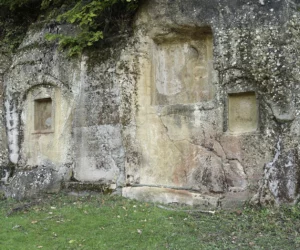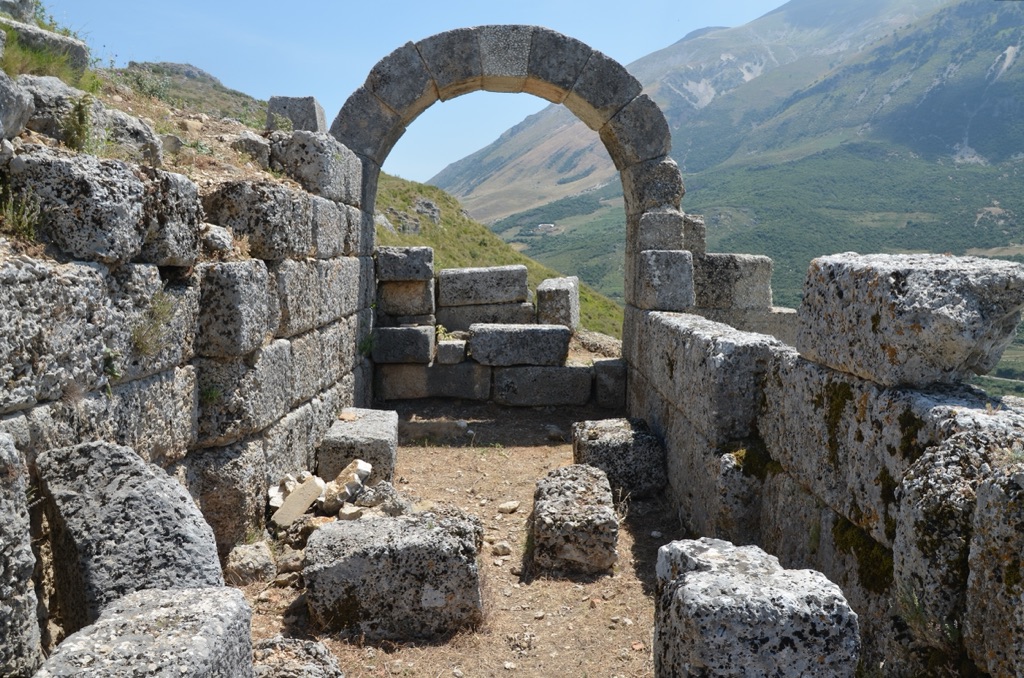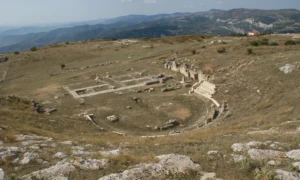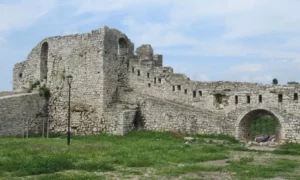The Archaeological Significance of DesiloDesilo, an archaeological site in Bosnia and Herzegovina, offers valuable insights into ancient Illyrian culture. Located near the Neretva River, Desilo has revealed artifacts and structures dating back to the 2nd century BC. This site has become a focal point for researchers studying the Illyrian civilization and its interactions with neighboring…
Illyrians
The Illyrians were an ancient group of tribes who inhabited the western Balkans, stretching from what is now Slovenia in the north down through Croatia, Bosnia and Herzegovina, Montenegro, and Albania, reaching as far east as the River Drina in Serbia. Their civilization’s timeline spans from the late Bronze Age, around 1200 BC, until their eventual conquest by the Romans in the 1st century BC. This diverse group of tribes shared similar language and cultural traits but was never united under a single ruler or government, making their history complex and fragmented.
One of the major moments in Illyrian history was their resistance against the expanding Roman Republic. The Illyrian Wars, primarily occurring in 229 BC and 219 BC, were pivotal in shaping the region’s future. These conflicts resulted in the gradual loss of Illyrian independence and the incorporation of their territories into the Roman Empire. The wars showcased the fierce independence of the Illyrian people but also their inability to unite against a common enemy, which ultimately led to their downfall.
Illyrian religion was polytheistic, with a pantheon that included both local deities and those borrowed from neighboring cultures, such as the Greeks and Romans. Their religious practices remain somewhat mysterious, but archaeological findings, including temples and artifacts, suggest that they worshipped a variety of gods associated with nature, fertility, and warfare. The cult of the sun god, a common deity among many ancient Indo-European peoples, was likely prominent among the Illyrians as well.
Social and daily life among the Illyrians varied from tribe to tribe but generally revolved around agriculture, livestock herding, and fishing. They were skilled metalworkers, particularly noted for their work with iron and bronze. The Illyrians built hillforts and fortifications to protect their communities, indicating a society accustomed to conflict. Social structure was likely tribal and hierarchical, with chieftains or kings ruling over individual tribes or small confederations of tribes.
Notable rulers among the Illyrians include King Agron of the Ardiaei tribe, who, in the 3rd century BC, managed to extend his rule over several neighboring tribes, creating a significant threat to Roman interests in the Adriatic. His widow, Queen Teuta, continued his aggressive policies, leading to the First Illyrian War against Rome. Another prominent figure was King Gentius, who ruled in the 2nd century BC and is known for his resistance against Roman domination, which ultimately led to his defeat and capture in the Second Illyrian War.
The Illyrians were from a region known for its rugged terrain and strategic coastal locations along the Adriatic Sea. This geography played a significant role in their development, influencing their economy, military strategies, and interactions with neighboring cultures. The coastal tribes became adept sailors, engaging in piracy but also trade, which facilitated cultural exchanges and the spread of ideas.
Wars and battles were a constant part of Illyrian history, not only against external forces like the Romans but also among themselves. Internal conflicts and tribal rivalries were common, preventing the Illyrians from forming a unified state. Their martial culture was well respected by their neighbors; Illyrian warriors were often hired as mercenaries by other ancient states, including the Greeks and Macedonians.
In conclusion, the Illyrians were a fascinating and complex civilization, marked by their fierce independence, skilled craftsmanship, and resilient spirit. Despite their eventual subjugation by Rome, the Illyrians left a lasting impact on the cultural and historical landscape of the Balkans, influencing the region’s development for centuries to come.

Selcë e Poshtme
Overview of Selcë e PoshtmeSelcë e Poshtme, commonly referred to as “Lower Selcë,” is a village in the Mokra area of Korçë County, Albania. Following the 2015 local government reform, it became part of the Pogradec municipality. The village is notably positioned on the right bank of the Shkumbin river at an elevation of 1,040…

Amantia
Amantia, an ancient city located in present-day Albania, boasts a rich history dating back to the classical period. It was a significant settlement in the region, known for its strategic position and strong fortifications. The city’s ruins, including the remnants of a stadium, a temple, and an acropolis, offer a glimpse into its storied past….

Byllis
Byllis is an ancient city located in modern-day Albania. It stands as a testament to the Hellenistic period, showcasing impressive ruins that hint at its past grandeur. The city, perched on a plateau overlooking the Vjosa River, offers a glimpse into the urban planning and architectural prowess of ancient civilizations. Byllis features a well-preserved theater, a stadium, and the remnants of several basilicas, which underline its historical significance. The site provides valuable insights into the cultural and historical dynamics of the region during antiquity.

Berat Castle
Berat Castle, a historical fortress overlooking the town of Berat, Albania, stands as a testament to the region’s rich history. This imposing structure has been a silent witness to the ebb and flow of many civilizations. It has seen the rise and fall of empires, serving as a strategic military stronghold and a living community. Today, it is not only a symbol of Albania’s cultural heritage but also a popular tourist attraction, offering a glimpse into the past through its enduring walls and ancient artifacts.

Royal Tombs of Selca e Poshtme
The Royal Tombs of Selca e Poshtme are a collection of Illyrian burial sites dating back to the 4th century BC. Located near the village of Selcë in Albania, these tombs are a testament to the complex funerary practices and the high level of craftsmanship of the ancient Illyrians. The site comprises several tombs, which were discovered in the late 20th century. They offer valuable insights into the social hierarchy, religious beliefs, and artistic achievements of the time.

